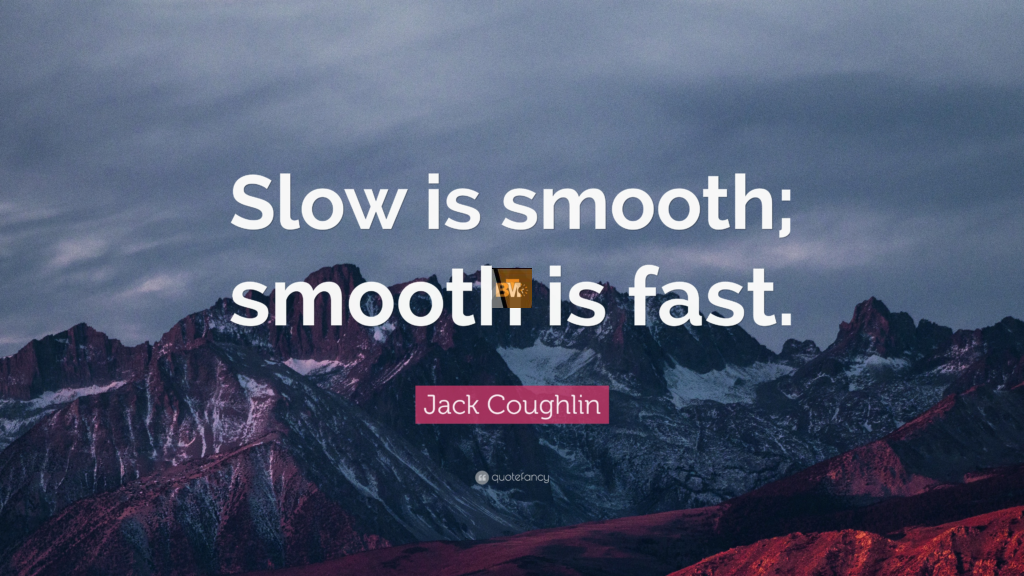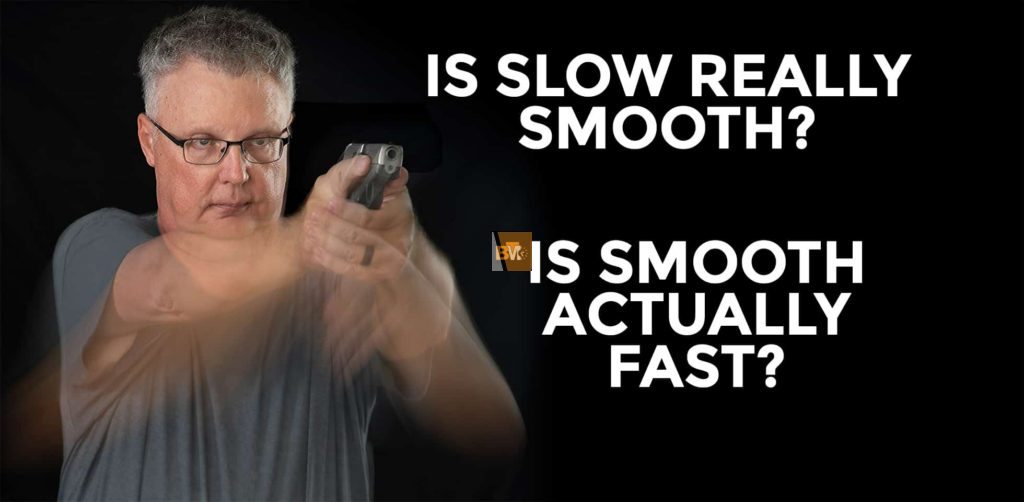The phrase “Slow is smooth, smooth is fast” might sound like a contradiction at first, but it’s actually a principle rooted in achieving success. It reminds us that rushing through tasks often leads to mistakes, but when you slow down and focus on doing things the right way, you can accomplish them faster in the long run. In this article, we’ll dive deep into what this phrase means, why it’s so effective, and how you can apply it to your own life to achieve better results.
What Does “Slow Is Smooth, Smooth Is Fast” Mean?
At its core, “Slow is smooth, smooth is fast” is about pacing yourself to achieve precision and efficiency. The idea comes from military training, where soldiers are taught that rushing leads to errors, while deliberate, methodical movements ensure success. When you work slowly and smoothly, you build habits, reduce mistakes, and get things done faster over time because there’s no need to go back and fix errors.
In practical terms, this phrase applies to many areas of life: learning a new skill, tackling a challenging project, or even navigating relationships. It reminds us that taking the time to do something properly—no matter how slow it feels—leads to smoother and faster outcomes in the long run.
How This Idea Helps in Real Life
The philosophy of “Slow is smooth, smooth is fast” has countless real-world applications. Think about driving a car in heavy traffic. If you rush and weave aggressively, you risk accidents or sudden stops. But if you drive smoothly, you conserve energy, avoid collisions, and reach your destination with fewer headaches.
Similarly, in professional or personal goals, slowing down doesn’t mean slacking off. It means focusing on the process, mastering the fundamentals, and avoiding careless mistakes that could cost you time and effort later. By prioritizing quality over speed, you often find that things flow more naturally and efficiently.
Why Being Smooth Is the Secret to Speed
To truly understand why smoothness is essential for speed, it’s important to recognize that rushing often creates problems. When we hurry, we tend to skip steps, miss details, or become stressed. This lack of smoothness creates friction, which ultimately slows us down.

Being smooth, on the other hand, is about consistency and control. Think of a professional athlete or a master craftsman. They don’t rush—they move deliberately, maintaining a rhythm that feels effortless. This is what allows them to achieve incredible speed and efficiency without sacrificing quality.
Stay Calm, Stay Focused
Smoothness begins with calmness. When you stay calm, you’re less likely to make impulsive decisions or panic under pressure. Focus is also key—it allows you to approach tasks one step at a time, giving each step your full attention. The calmer and more focused you are, the smoother (and faster) your performance becomes.
Practice Makes Smooth
Smoothness isn’t something you can achieve overnight—it takes practice. Repetition allows you to build muscle memory and refine your techniques, whether it’s learning to play an instrument, mastering a sport, or excelling at a new job. By practicing deliberately and consistently, you build the foundation for smooth execution.
Why Rushing Creates Problems
Rushing leads to sloppy mistakes and wasted energy. Have you ever rushed through an assignment, only to realize later that you missed key details and had to redo it? That’s because rushing sacrifices accuracy and precision. It may feel fast in the moment, but it actually slows you down over time.
Where Did “Slow Is Smooth, Smooth Is Fast” Come From?
The phrase “Slow is smooth, smooth is fast” has its origins in military training, particularly in elite forces like the Navy SEALs. In high-stakes situations, rushing could mean life or death, so soldiers are trained to move deliberately and methodically. By focusing on precision, they ensure success even under extreme pressure.
Over time, this principle has been adopted beyond the military, finding relevance in fields like sports, education, business, and personal development. It serves as a universal reminder that haste often makes waste, while deliberate action leads to mastery.
Can “Slow Is Smooth” Make You Smarter?
Yes, the philosophy of slowing down and focusing can actually make you smarter. When you approach tasks with intention, your brain has the opportunity to process information more effectively. This leads to deeper understanding, better problem-solving skills, and improved decision-making.
For example, if you’re studying for an exam, rushing through material might help you finish quickly, but you’re less likely to retain what you’ve learned. On the other hand, taking the time to understand concepts thoroughly allows you to apply them in the future. In this way, “Slow is smooth, smooth is fast” isn’t just about speed—it’s about building long-term intelligence.
Learning New Skills the Right Way
When it comes to learning, patience and persistence are key. Mastery doesn’t happen overnight—it’s a gradual process that requires dedication and effort. The principle of “Slow is smooth, smooth is fast” is particularly useful here because it encourages you to focus on the process rather than the outcome.

Why Patience Is a Superpower
Patience allows you to stay committed to your goals, even when progress feels slow. It gives you the ability to embrace challenges and setbacks as part of the journey, rather than becoming discouraged. In a world that often values instant gratification, patience is a superpower that sets you apart.
Examples of Slow and Smooth Wins
- Learning a Language: Rushing to memorize vocabulary without understanding grammar will leave you frustrated. Instead, focusing on foundational concepts allows you to become fluent faster.
- Physical Fitness: Crash diets or extreme workout regimens might give quick results, but they’re often unsustainable. A slow, consistent approach to exercise and nutrition leads to lasting health.
- Career Growth: Jumping at every opportunity might spread you too thin. Taking the time to develop expertise and build relationships often results in faster promotions and long-term success.
How to Practice “Slow Is Smooth, Smooth Is Fast” in Your Life
To apply this principle, start by breaking tasks into smaller, manageable steps. Focus on completing each step with care rather than rushing to the finish line. Over time, you’ll notice that your work becomes more efficient, and your confidence grows. It’s also important to stay patient and trust the process—even when progress feels slow, you’re building a strong foundation for future success.
Tips to Stay Smooth and Get Faster
- Prioritize Quality Over Speed: Always focus on doing things the right way, even if it takes longer initially. Over time, you’ll naturally become faster as your skills improve.
- Take Breaks: Regular breaks help you maintain focus and avoid burnout. Remember, rest is essential for smooth performance.
- Stay Organized: Create a clear plan before you start a task. Organization reduces stress and helps you move through tasks more smoothly.
- Reflect and Improve: After completing a task, take a moment to reflect on what went well and what could be improved. This practice helps you refine your process over time.
The Bottom Line
The phrase “Slow is smooth, smooth is fast” isn’t just a catchy saying—it’s a powerful mindset that can transform the way you approach challenges. By slowing down and focusing on smooth, deliberate action, you can achieve faster, better results in all areas of life. Whether you’re learning a new skill, pursuing a goal, or simply trying to improve your daily routine, this principle reminds us that patience and precision pave the way to success. So, take a deep breath, slow down, and watch as your efforts flow smoothly—and more efficiently—than ever before.







Leave a Reply